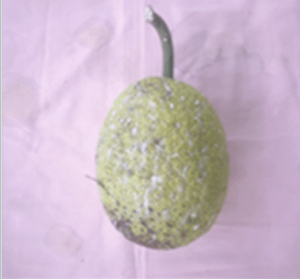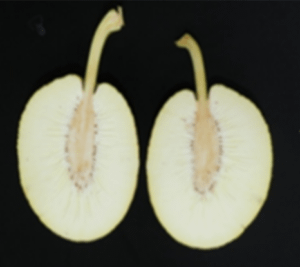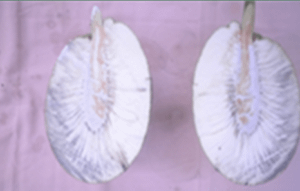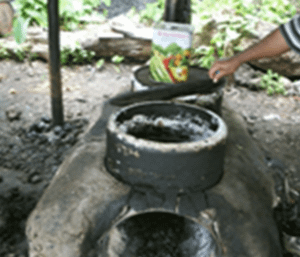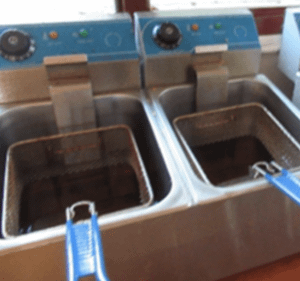Processing & Value-Adding
You’ve come to the right place if you are interested in learning how mature and ripe fruit can be processed into shelf-stable products, such as chips and other snacks, and other value-added products, expanding the use of breadfruit as a food and also creating marketing opportunities. Historically, processing has been confined to practices that will preserve foods, to reduce waste and to extend the period over which they can be eaten (shelf-life), particularly for foods with short seasons. Processing is also an activity in its own right to generate income and employment and to provide a food option out of season – that is – to add value. The longer-term market opportunities for processed breadfruit products (both for local consumption and for export) are expected to be far greater than for fresh breadfruit. If you are interested about this, please visit our page on marketing and market opportunities.
Breadfruit is a significant dietary component in tropical countries where the trees are widely grown. As a food, carbohydrates make up the significant fraction of energy in breadfruit with 100g (about four ounce serving) providing 102 calories. Breadfruit is an energy-rich food, high in complex carbohydrates, low in fat, and a good source of fibre and minerals, such as iron, potassium and calcium. It is a nutritionally higher quality protein source than occurs in other staple foods, such as wheat, rice and potato. The fibre in breadfruit and the starch fractions among the carbohydrates maintain health in the digestive system. The starches are slow to digest leading to a sense of satisfaction for longer periods than when eating sugary foods, thereby reducing the desire for constant snacking and hence lowering the risks of diabetes and obesity.
At maturity the starch gives breadfruit its characteristic texture when cooked by the usual method of boiling. Breadfruit at full maturity is considered to be the most acceptable in todays’ communities and markets. After full ripening the starch begins to break down into simple sugars, hence, ripe fruits are sweeter and have a pleasant custard aroma. However, these sugars are ideal targets for micro-organisms which convert the sugars to a range of unpleasant chemicals including lactic acid resulting in a breakdown of the texture of the breadfruit.
Maturing and attack by micro-organisms is part of the natural process. Most micro-organisms are harmless and simply change foods to an unacceptable degree, known as spoilage. Some micro-organisms will cause illness or death and are known as pathogenic bacteria. To keep breadfruit in a condition that is acceptable to eat, the growth of bacteria must be stopped, which is what preservation achieves.
In stopping the growth of micro-organisms, preservation can be used to extend a season so that the breadfruit in one form or another is available throughout the year. Preservation also provides an opportunity to use the excess breadfruit that is available at peak season, rather than have it rotting on the ground. Processing also adds value to the breadfruit and can be the basis of a commercial activity. Certain elements are required for a sustainable commercial processing enterprise:
- A consistent supply of raw material of the correct quality: processing is much easier with large volumes of raw material of the appropriate quality. Low volumes of product are more expensive to produce because high throughput rates have economies of scale. In addition, if crops are highly seasonal, such as from a single breadfruit variety, for much of the year production levels are low. This means that any enterprise/industry will not be profitable and therefore, not sustainable. A solution can be to process other food crops during the breadfruit offseason to ensure your labour and equipment is being utilised for an extended period.
- A suitable variety: all varieties can be processed since the quality is largely consistent throughout (Figs. 1a-c). However, during processing waste is less if the varieties chosen have large fruit. Both the Samoan ma’afala and the Fijian bale kana varieties are suitable for processing but because they are smaller than other varieties, the proportion of the fruit that is trimmed will be higher, which may increase costs. Fruit that is split or badly bruised can still be used for processing if trimmed and hence wastage in the field can be reduced.
|
|
Figure 1a: Bale kana is a variety of good eating and keeping quality – regarded as the best in Fiji. Fruits are small and oval, averaging around 1 kg in weight, which is somewhat small for efficient processing. |
|
|
Figure 1b: Uto dina is a widely grown traditional variety in Fiji with good eating and processing properties. Fruits are oval in shape and are among the limited number of big-sized fruits which can weigh up to 2 – 3kg per fruit. Thus this variety is a good size for efficient processing. |
|
|
Figure 1c: Uto bucu (or vula) is a very large variety weighing around 5 – 6 kg with good eating qualities. Processing wastage would be low. |
The equipment necessary to process the product; the equipment required for processing depends on which method of processing is chosen (Figs. 2a-d). Food processing equipment can range from domestic kitchen appliances to highly sophisticated machines that affect all the operations necessary for production. For each of the processing methods described below, the basic equipment required has been included.
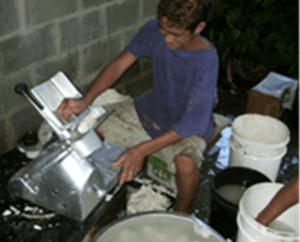
Figure 2a: Hand operated slicer in a village-based chip making enterprise in Samoa
Figure 2c: Simple oven for deep frying at Samoan chip making enterprise |
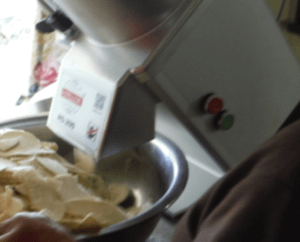
Figure 2b: A mechanized electric chip slicing machine used at the Tutu Rural Training Centre
Figure 2d: Electric deep fryers installed at Tutu for breadfruit and other chips |

